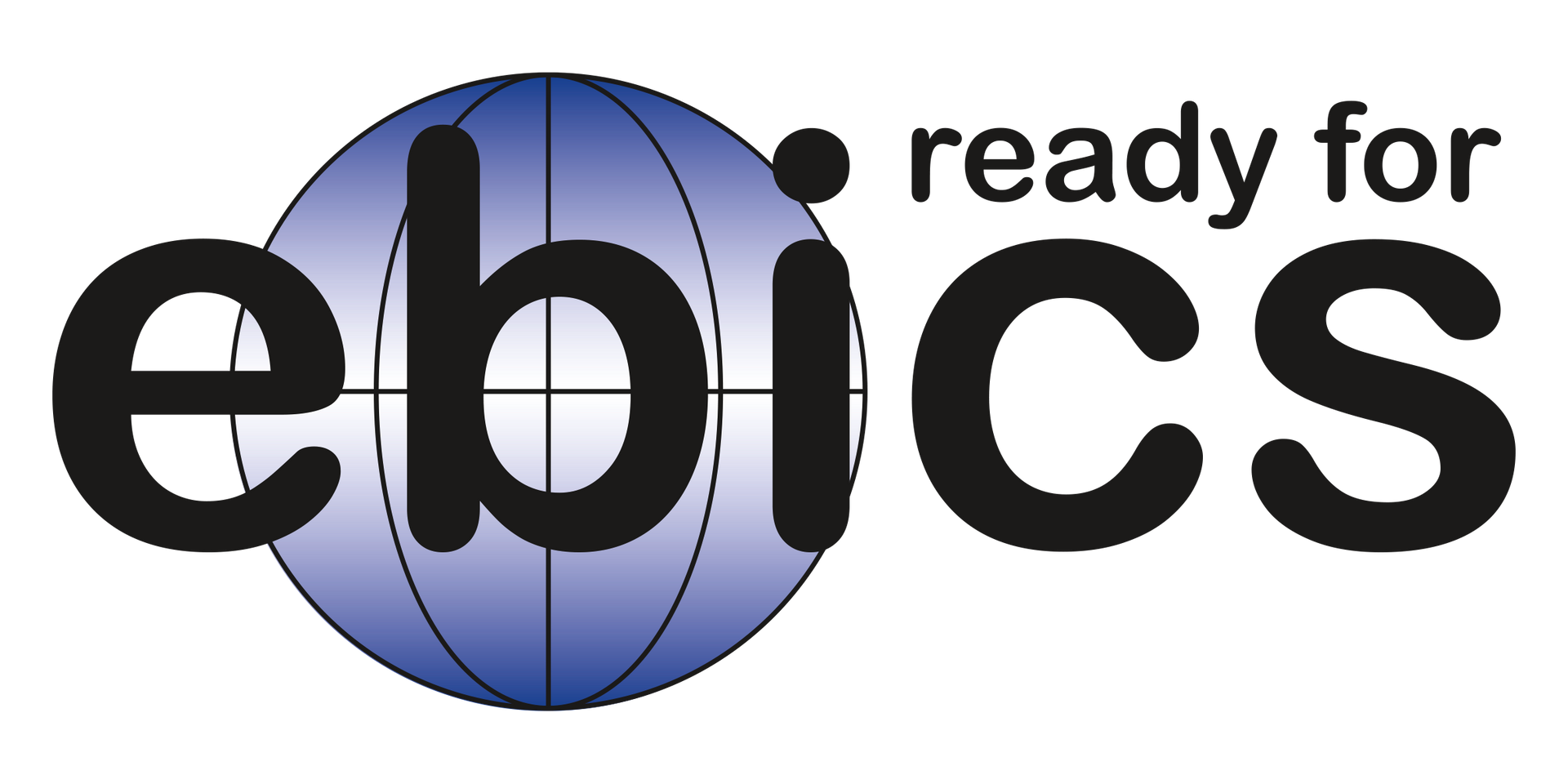Is your accounting ready for EBICS?
Multi-banking in Switzerland through an EBICS connection to the accounting tool or ERP system
Last update: 17 May 2025
Topics
Accounting software
Cash management
EBICS 3.0 interface
Electronic account statements
Enterprise Content Management (ECM)
Enterprise Resource Planning (ERP)
Multi-banking in Switzerland
Open banking
Treasury Management Systems (TMS)
XML-format
"Standardization is a precondition for digital transformation"
EBICS reduces the number of logins and interfaces with banks.
Swiss companies benefitting from EBICS can access all banks through a single login and dashboard and work with account statements where needed - in the accounting tool.
EBICS makes cash management and liquidity planning easier.
With EBICS, Swiss companies can view their account balances and cash flows at a central location and manage liquidity across all connected banks (interbank reconciliation).
EBICS sets access rights and authorized signatories by itself.
EBICS manages account access and signatories internally. Changes no longer need to be painfully recorded in e-banking or on paper.
EBICS is the European and Swiss gold standard of multi-banking.
EBICS is the European standard multi-banking interface. It has been widely adopted in Germany, Switzerland, Austria and France.
What is open banking?
Open banking or multi-banking enables the
exchange of financial data (account, payment and user information) between banks and third-party providers (FinTechs or accounting software) via the
EBICS protocol (Europe) or
API integrations (worldwide). Traditionally, banks kept personal and financial data in their own closed systems.
Open banking gives control over financial data back to the customer. In effect, it empowers bank clients to authorise financial institutions to share their personal data and payment account access with selected third parties.
What is EBICS?
Since 2016, the European
EBICS transmission protocol ("Electronic Banking Internet Communication Standard") has made it possible to receive all account transactions in Switzerland as an XML file in any ERP or accounting system. However, EBICS must first be
ordered and activated at the respective bank. As a rule, the EBICS setup must be requested
from the customer advisor and not via the online banking hotline.
EBICS then delivers the entire e-banking including payment functionality to any consuming software - free of charge. A few Swiss banks may, however, charge a small EBICS set-up fee. Also, not all Swiss banks support the entire EBICS range of functions, especially intraday statements and direct debit authorizations.
Last but not least, not all Swiss banks have real-time core banking systems (here), which means that the initiation and reporting of EBICS payments can be delayed. For example, the cut-off time for payments with the same value date is often as early as 3 p.m. in the afternoon.
Which Swiss banks support EBICS?
Of the approximately 240 financial institutions in Switzerland, over 50 Swiss banks offer EBICS in various versions, in many cases via the Swisscom EBICS-as-a-Service connector or via their own EBICS client with its own connection parameters.
Here is a list of Swiss banks supporting EBICS with a link to guidance where available:
- Aargauische Kantonalbank (here)
- acrevis Bank AG (here)
- AEK Bank 1826 Genossenschaft
- Alpha RHEINTAL Bank AG
- Appenzeller Kantonalbank
- Baloise Bank AG
- Banca dello Stato del Cantone Ticino (here)
- Bank BSU Genossenschaft (here)
- Bank CIC (Switzerland) AG (here)
- Bank Cler AG (here)
- Bank EEK AG
- Bank EKI Genossenschaft
- Bank SLM AG
- Bank Thalwil Genossenschaft
- Banque Cantonale de Fribourg (here)
- Banque Cantonale de Genève (here)
- Banque Cantonale du Jura SA
- Banque Cantonale du Valais - BCVS (here)
- Banque cantonale neuchâteloise (here)
- Banque Cantonale Vaudoise - BCV (here)
- Banque du Léman SA
- Basellandschaftliche Kantonalbank - BLKB
- Basler Kantonalbank - BKB (here)
- BBO Bank Brienz Oberhasli AG
- Berner Kantonalbank - BEKB (here)
- Bernerland Bank AG
- Bezirks-Sparkasse Dielsdorf Genossenschaft
- Clientis Bank Toggenburg AG
- Clientis Entlebucher Bank AG
- Graubündner Kantonalbank (here)
- GRB Glarner Regionalbank Genossenschaft
- Hypothekarbank Lenzburg AG (here)
- Hypo Vorarlberg Bank AG, Bregenz, Zweigniederlassung St. Gallen (here)
- LLB AG (here)
- Lienhardt & Partner Privatbank Zürich AG
- Luzerner Kantonalbank (here)
- PostFinance AG (here)
- Raiffeisenbank Firmenkunden (here)
- Regiobank Solothurn AG
- Sankt Galler Kantonalbank (here)
- SB Saanen Bank AG
- Schwyzer Kantonalbank (here)
- Spar- und Leihkasse Bucheggberg AG
- Spar + Leihkasse Riggisberg AG
- Thurgauer Kantonalbank (here)
- UBS Switzerland AG (here)
- Urner Kantonalbank (here)
- Valiant Bank AG (here)
- VP Bank (Switzerland) AG (here)
- Zuger Kantonalbank (here)
- Zürcher Kantonalbank (here)
Software providers can also connect to certain banks via the bLink platform offered by SIX Group (here), but this is likely to generate additional costs as SIX charges monthly participation fees.
What has EBICS to offer?
EBICS supports a wide range of operations, including payment orders, direct debits, account statements and even securities reporting. This flexibility makes it a good solution for medium to large businesses.
With EBICS, Swiss companies and organizations can:
- Make payments: EBICS facilitates national and international money transfers, including SEPA payments ("Single Euro Payments Area") and remittances in foreign currencies (pain.001)
- Receive payment confirmations: EBICS delivers confirmation of completed transactions, providing additional assurance and traceability through payment status reporting (pain.002)
- Group payments: EBICS enables multiple payments to be combined in one XML file to simplify the management of batch orders such as salaries or payments to suppliers (pain.003)
- Enter automatic direct debits: Swiss companies can use EBICS to administrate automatic direct debits, especially for recurring payments such as invoices for monthly subscriptions from rental, leasing or telecom contracts (pain.008)
- Simplify corporate cash management: EBICS enables companies to view their account balances and cash flow movements intraday (camt.052) or using end-of-day statements (camt.053)
- Download credit and debit advices in PDF format (camt.054)
Which Swiss software vendors support EBICS?
- 360 Documents - Swiss DMS and electronic records management software (here)
- Abacus / DeepCloud - Swiss accounting and ERP software (here)
- bexio (La Mobilière) - Swiss accounting software (here)
- Crésus - Swiss accounting software (here)
- Klara (Swiss Post) - Swiss accounting software (here)
- Proffix (Forterro) - UK accounting and ERP software (here)
- Sage - UK accounting and ERP software
- SAP - German accounting and ERP software
(here)
Activate the EBICS protocol in 360 Documents (here)
Manage e-banking of all banks in one dashboard
Pay invoices directly from 360 Documents
| ISO 20022 cheatsheet | |
|---|---|
| PAYMENT INITIATION | |
| pain.001 | Make payment order |
| pain.002 | Get payment status report |
| pain.003 | Make bulk payment order |
| pain.008 | Set up direct debit order |
| CASH MANAGEMENT | |
| camt.052 | Get intraday account statement |
| camt.053 | Get end-of-day account statement |
| camt.054 | Get debit / credit notifications in PDF |





